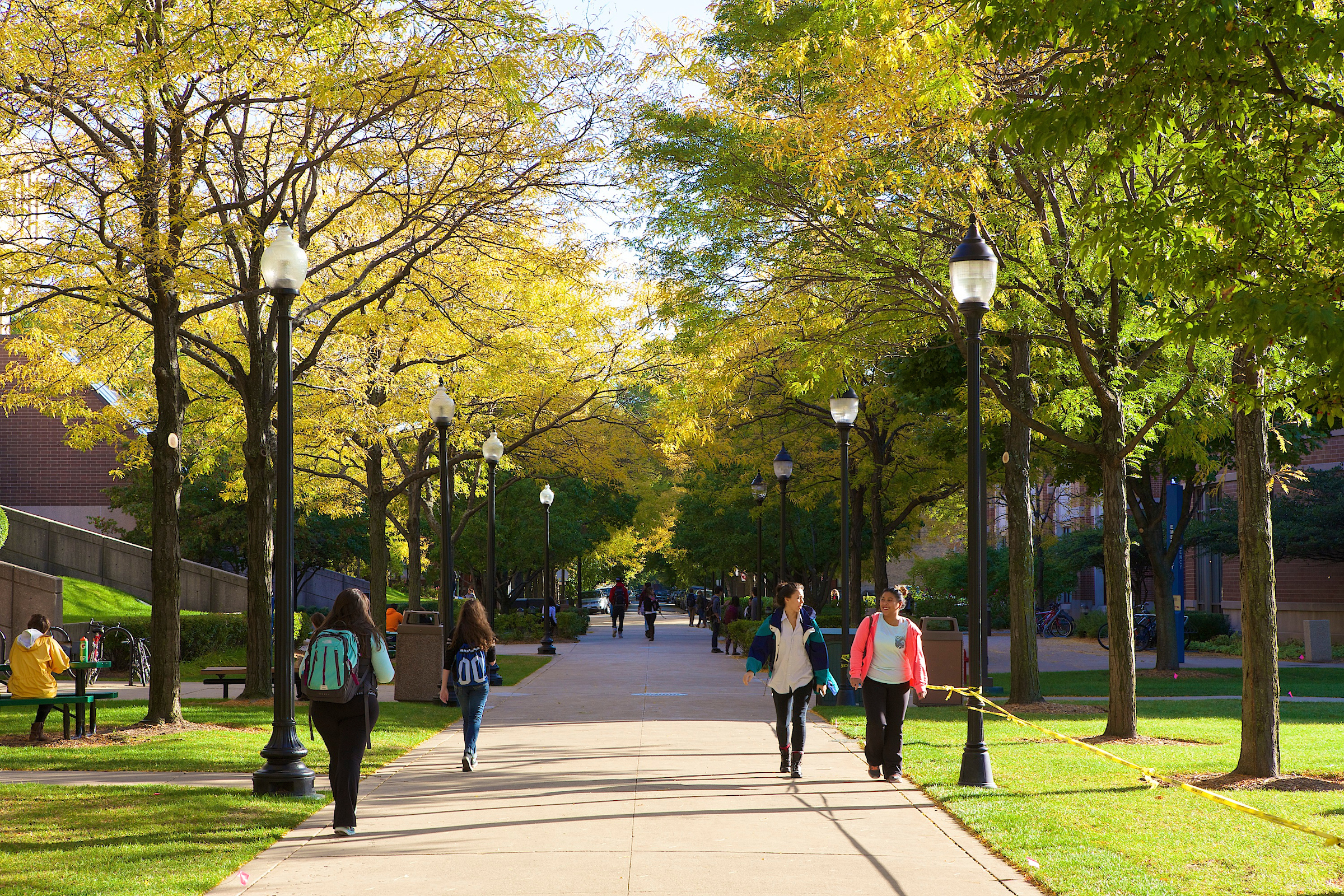 By registering 22,769 students for fall 2017 classes, DePaul exceeded its budgeted target by 418 students, or nearly 2 percent. (DePaul University/Jamie Moncrief)
By registering 22,769 students for fall 2017 classes, DePaul exceeded its budgeted target by 418 students, or nearly 2 percent. (DePaul University/Jamie Moncrief)
Fall enrollment is the bellwether for how successfully the university will achieve its budget outcomes for the fiscal year. By registering 22,769 students for fall 2017 classes, DePaul exceeded its budgeted target by 418 students, or nearly 2 percent.
While enrollment exceeded projections for the fall, it is important to note that the budgeted target anticipated a decline. Total enrollment is 341 students less than last fall.
"It's certainly imperative to meet the budget targets set in the SRAC process so the university has the resources to provide the high-level experience our students deserve, and as a university community we accomplished that," states David Kalsbeek, senior vice president of Enrollment Management and Marketing.
"But while we had a successful fall relative to budget, it does not negate the challenges we face as a result of cumulative enrollment declines in some programs over the past few years," Kalsbeek says. "The competitive landscape continues to intensify, and the demographic and economic forecasts in the state and the region are not favorable. The number of students with significant financial need requires a greater investment in grants and scholarships. These are very real challenges that will continue to impact us, as they will every university."
Record-setting diversity leads list of enrollment highlights
In the face of these volatile external dynamics, several accomplishments stand out. The diversity of the student population has long been one of DePaul's most prominent attributes. This fall, 8,544 students of color enrolled, accounting for 38 percent of all students - both the highest number and highest proportion in DePaul's history.
"Achieving a diverse student profile is a strategic priority at DePaul and an important measure of the university's commitment to its mission," Kalsbeek says.
The freshman class is another area of strength. The 2,542 students represent the fourth-largest freshman class in DePaul's history, and a record 43 percent are students of color. Thirty-three percent are first-generation students and 36 percent come from out-of-state. The academic profile is consistent with the past 5 years; the average GPA is 3.60 and the average ACT is 25.3.
"Bringing in one of our largest freshman classes is a testament to DePaul's recruitment and marketing efforts," Kalsbeek says. "Doing so while sustaining academic quality and diversity speaks to the strength of the DePaul brand."
Growth at the graduate level is another highlight. With 7,130 students, graduate enrollment is three percent more than last year and four percent over the budgeted goal. This was propelled significantly by strong gains in the Kellstadt Graduate School of Business, which increased enrollment over 300 students, or 16 percent, from last year.
One driver of growth at the graduate level is the Corporate and Employer Outreach initiative.
"The CEO team works with our colleges and faculty in developing customized and convenient programs with prominent employers in the Chicagoland area," Kalsbeek says. "CEO enrolled 139 new students this fall by launching five cohorts in collaboration with Kellstadt, Education, Liberal Arts and Law. It's an innovative strategy that builds mutually beneficial partnerships with employers in meeting their workforce development needs."
Slow decline in undergraduate enrollment continues
After nearly two decades of sustained enrollment growth, undergraduate programs show the effects of demographic, economic and competitive pressures in recent years. Since peaking in 2012, undergraduate enrollment has decreased slightly each year, particularly among part-time students. While undergraduate enrollment of 14,816 students surpasses the budgeted goal of 14,776 by 40 students, it is 4 percent less than last year.
"The ebbs and flows in enrollment reflect changing student interests in areas of study and DePaul is no exception," Kalsbeek notes. "Despite gains in technology, digital arts, business and health programs, enrollment decline at the undergraduate level is significant. It would be a greater challenge if we did not have such a diverse portfolio of academic programs."
A downward trend in transfer students in recent years accounts for a significant share of the change in undergraduate enrollment. Transfer enrollment of 1,199 students is eight percent less - 101 students - than the budgeted level and two percent less than last year, continuing a multi-year decline from when it peaked in 2012 at 1,542.
"Transfer enrollment continues to be a strategic priority for the university, but it is not without challenges. While our market share for transfers remains strong, the pre-transfer enrollment at the community colleges in the region continues to get smaller," Kalsbeek says.
Another contributing factor is the discontinuation of the competency-based adult degree program in the School for New Learning. This resulted in a decline of 130 new students from last year.
Strategic plan will shape future priorities
These enrollment challenges and opportunities provide context for the strategic planning process commencing this fall.
"Setting clear priorities is how a university's strategic plan frames its enrollment goals. Identifying academic areas where DePaul's strengths can be leveraged to respond to growing market demand will be one key to our long-term success," Kalsbeek says. "Moreover, improving DePaul's value for increasingly cost-conscious students will be a strategic priority of the first order."